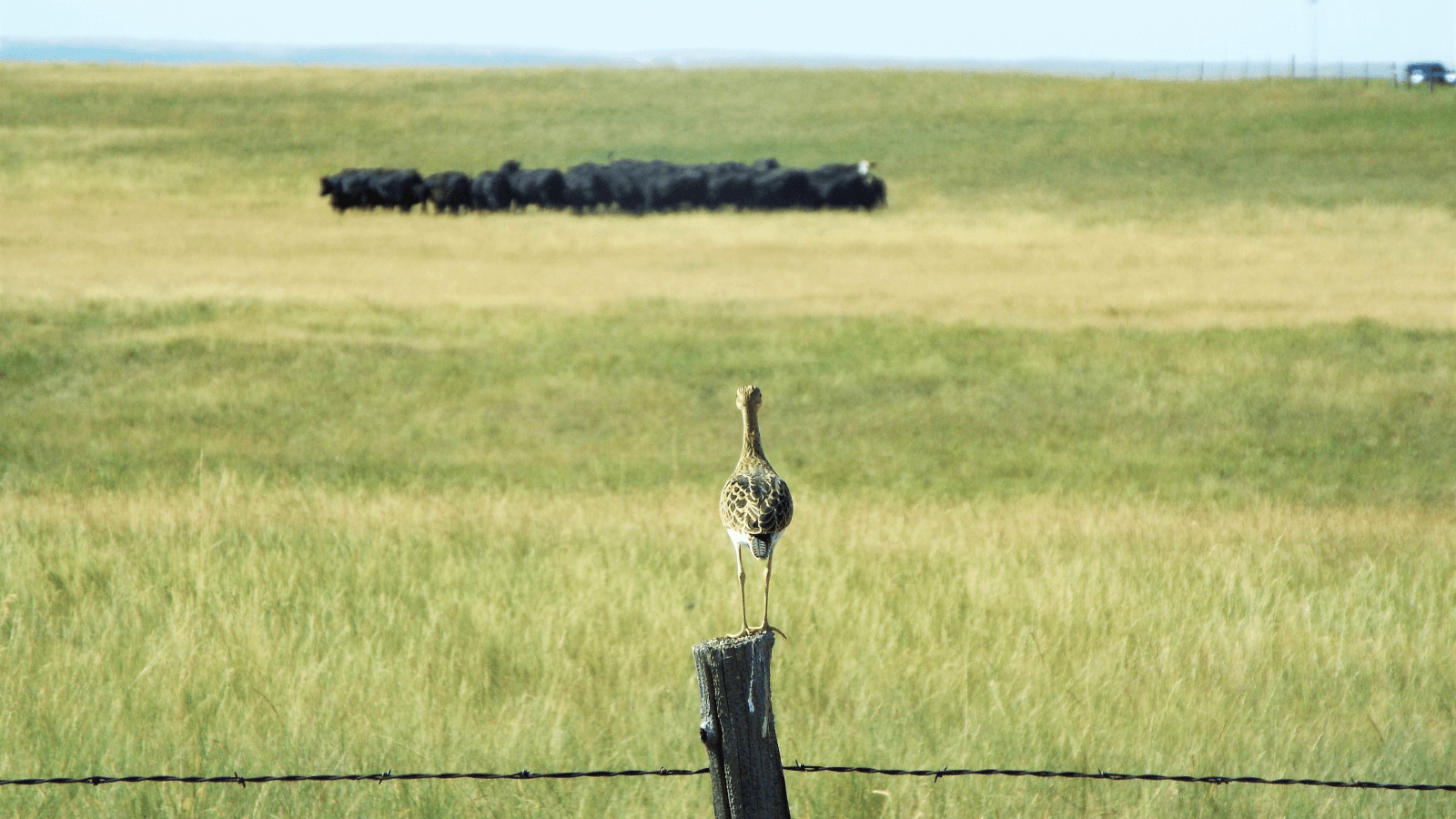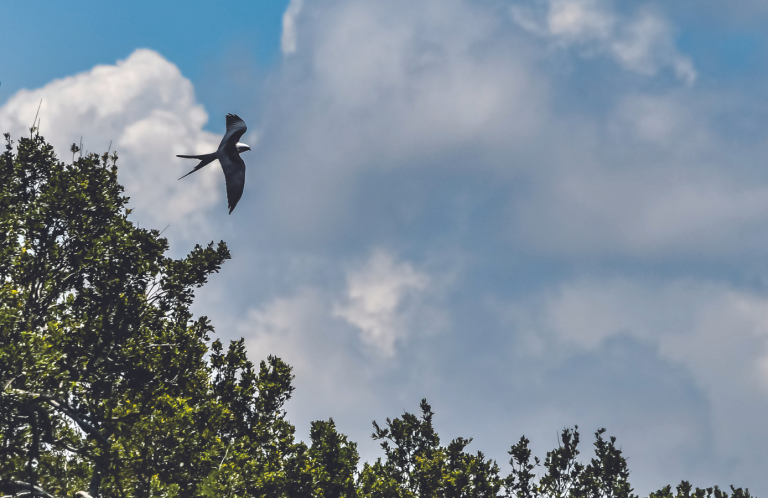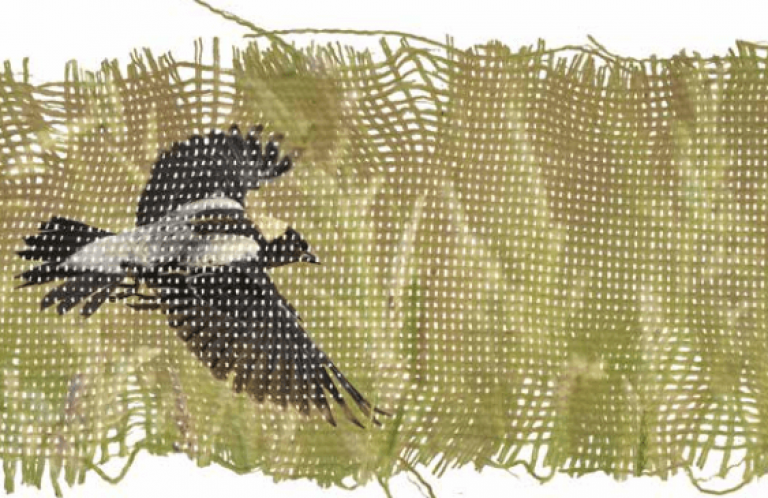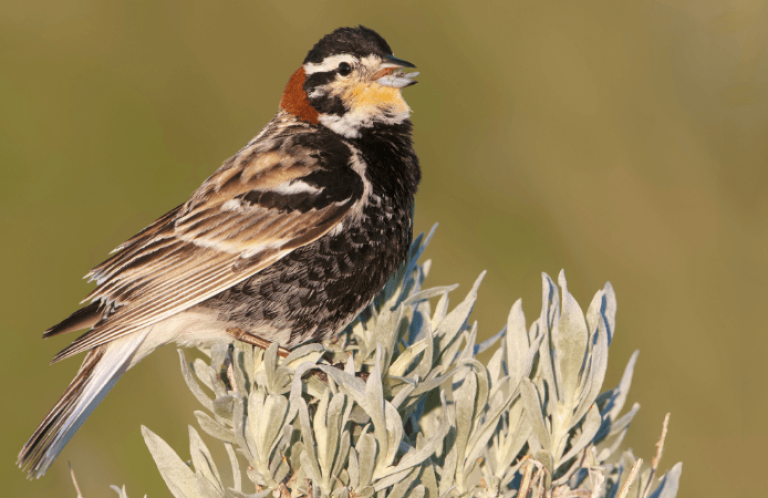Working the Land to Work for Birds
How the Farm Bill helps landowners across the United States make a real difference for struggling bird populations.
For more than 20 years, Bill and Betty Perkis could barely use their 40-acre woodland property in Michigan's Upper Peninsula — it was too densely overgrown with a tangled thicket of Speckled Alder (a shrub also known as Tag Alder). Then, in 2020, Bill got an email that piqued his interest. The Natural Resources Conservation Service (NRCS), a U.S. Department of Agriculture agency, was looking for landowners with Tag Alder stands who would be interested in receiving funding to thin their forest to create better wildlife habitat.
“I said, ‘You're telling me Tag Alder is good for something?'” Betty recalls with a laugh.

The Perkises reached out to the NRCS, and after some consultations with the program and with American Bird Conservancy (ABC), they realized that their property could be made into perfect habitat for a declining songbird called the Golden-winged Warbler. They also learned that their own preferences for their property were well aligned with the little warbler's — Golden-winged Warblers like what is known as “early successional” forest with a mix of older trees, young saplings and shrubs, and open spaces. That meant thinning the thicket that had been perturbing the Perkises for more than two decades.
In the summer of 2020, work began to thin their forest and plant native shrubs and trees in the newly opened spaces. Three years on, the Perkises now have a few trails winding through their property, and they walk or snowshoe on them nearly every day, marveling at the explosion of wildlife all around.
“It's the greatest thing we've ever done,” Bill says.
The Perkises have joined thousands of other landowners across the country in restoring their land for wildlife with funding from what many would consider an unlikely source — the Farm Bill. This important piece of federal legislation, passed every five years, is best known for things like farming subsidies and SNAP food benefits. But the Farm Bill also has a lesser-known chunk of funding dedicated to conservation on private lands. In the most recent iteration of the bill, about $20 billion was dedicated to conservation efforts. That makes the Farm Bill the single biggest piece of conservation legislation in the world.
Most work that ABC does on private lands throughout the United States is funded, at least in part, by the Farm Bill. This work is fundamentally important to the success of bird habitat conservation in the country, where three-fourths of all land is privately owned.
The current Farm Bill expired in September, and Congress is debating how funds will be allocated for the next five years. For the sake of birds, ABC and other conservation groups are supporting legislators who want to maintain conservation funding levels and are opposing the efforts of some lawmakers who want to reduce or redirect funds for conservation in the bill.
Below are just a few examples of projects where ABC is using Farm Bill funding to work with private landowners to make a real difference for struggling bird populations.
Making a Home on the Range

Good fences make good neighbors, or so the old adage goes. In the rangelands of South Dakota, there may be some truth to this — at least when it comes to respecting the neighborhood grassland birds.
In the Northern Great Plains — a region comprising South Dakota, Montana, and parts of North Dakota and Wyoming — ABC staff members like Kevin Ellison, Northern Great Plains Program Manager, work with landowners to manage their land in a way that helps breeding birds thrive. Breeding grassland birds need all the help they can get. They are the fastest-declining group of land birds in the lower 48 states; many are on track to lose 50 percent of their population by 2050. That's largely because their breeding habitat is disappearing fast, developed for monoculture farms or residential areas.

To mitigate declining grassland habitat, ABC developed the Grassland Bird Breeding Habitat Management Program. The program receives most of its funding from the Farm Bill, because most remaining grasslands in the Northern Great Plains are on private lands like cattle ranches. Since 2017, the flagship species for this work has been the Long-billed Curlew, a football-sized migratory shorebird that breeds in the Great Plains. The bird is recognizable and familiar to most landowners in the area, and if breeding habitat is suitable for the curlew, it is suitable for many other species as well, including the Chestnut-collared Longspur, Lark Bunting, and Western Meadowlark.
Ellison oversees restoration projects that include seeding native grasses to replace introduced grass species that don't fare as well in the region's dry climate. Much of his work also involves funding and installing new infrastructure — a measure less obviously tied to habitat conservation, but fundamentally important to the future of healthy grasslands. Such efforts, he says, are key to restructuring the landscape in a way that helps ranchers and birds alike.
“We're applying 21st century ideas but working with partners with 1950s infrastructure,” Ellison says.
This is where good fences come into play. Decades-old fence structures can keep landowners who want to try new grazing techniques that are better for the land, the birds, and their bottom line stuck using old methods. And money is a big barrier to changing things up. It can be incredibly expensive and time consuming to rip out old fences and replace them with new ones. Thanks to ABC guidance and NRCS funding, though, landowners throughout the region are getting the resources they need to make the switch. This has multiple benefits.
New fences are built with design features that make it easier for antelope and other wild species to move across the landscape without getting stuck. The new fences also split up ranchers' lands differently, typically into smaller grazing pastures better suited to a technique called regenerative grazing.
Regenerative grazing involves grazing cattle on a smaller area of land for shorter and more intense bursts. Then, the cattle are moved on to the next pasture, enabling the pasture they just grazed to regrow. This leaves most of the land free to nesting birds like Long-billed Curlews, while also providing an essential service — American grasslands are adapted to herds of grazers and still need this kind of disturbance to be at their most healthy.
Once it's up and running, regenerative grazing can be great for ranchers, cattle, and birds, Ellison says. It enables ranchers to graze more cattle per acre, raising their profits. The cattle get better-quality grass. And, birds get better-quality habitat.
Since 2021, ABC's South Dakota program has converted 31,000 acres to regenerative grazing practices — an area more than twice the size of Manhattan. This includes 320 acres of native plants seeded and 48,382 feet (more than 9 miles) of new fencing. If more money for this kind of work is in the next approved Farm Bill, those impressive numbers can continue to expand. Such expansion of regenerative grazing is essential to turn the tide of losses for grassland birds and conserve this most quintessentially American ecosystem.
Getting Fired Up for Birds

In the pine forests of southern Arkansas and northern Louisiana, good bird habitat isn't managed with fences or grazers — it's managed with fire.
Pine forests are adapted to periodic fire. Centuries ago, lightning storms and Indigenous people regularly created fires that burned through dead plant material, young saplings, and scrubby plants in the understory of this ecosystem that once stretched through much of the Southeast. This helped sun shine through to the forest floor, creating a sort of woodland-savannah-prairie system with a few pine trees and a blanket of prairie plants. But beginning in the 1900s, fire was suppressed, and the historically open forests became more crowded and homogenous, blocking out the sunlight that allowed prairie plants to flourish.
Now, thanks to funding from the Farm Bill, ABC staff members in the region are connecting with landowners with upland forest stands to implement controlled burns and other techniques to open up the forest. Many landowners begin with an interest in better hunting opportunities on their property, says Austin Klais, an ABC staff member working with the Lower Mississippi Valley Joint Venture.
“One of their main objectives may be to get increased numbers of quail, turkeys, and other game species,” Klais says. But open forest habitat is beneficial to a whole range of bird species that ABC is working to conserve, including Brown-headed Nuthatch, Red-headed Woodpecker, and Indigo Bunting. And participating landowners are starting to take notice of these birds as well.
Over the last couple of years, a wide range of partners that include ABC have begun inviting landowners to help conduct bird counts to keep track of the growing avian diversity on their property. They are given a list of six species to watch and listen for — the list includes Northern Bobwhite and Wild Turkey, as well as songbirds like Yellow-breasted Chat and Prairie Warbler.
“So, in addition to the habitat management they get to do, they'll also get to track their progress with the bird species and hopefully see the response to their methods,” Klais says. He admits that he was initially skeptical that many landowners would be interested in the idea. “But they have absolutely loved it,” he says.
Once landowners are taught how to identify songbird species, they enjoy getting a more nuanced understanding of the habitats on their property and the way things are changing over time.
ABC began working with landowners on this habitat restoration project in the region in late 2022, so it's too early to measure exactly how much diversity will be brought back now that the pine forests have been opened up, but things are looking promising. So far, more than 4,000 acres of land have been committed to this new management style, and over the next several years, the plan is to restore or enhance 30,000 acres of privately owned pine forest across Arkansas and Louisiana. Without the Farm Bill, most of this land would have remained in the old style of management.
“When people want to do good things, this funding through the Farm Bill can help them actually get it done,” Klais says.
A Golden Opportunity
In the Great Lakes region of the United States, Farm Bill funding also is being used to manage deciduous forests of aspen and alder. This is the pot of money that the Perkises dipped into to improve their own slice of land for Golden-winged Warblers.
To create Golden-winged Warbler habitat, foresters clear out overgrown alder stands, opening up the landscape for a higher diversity of fruit- and nut-producing shrubs and trees. They leave the larger alders as perch and singing sites for Golden-wings and other songbirds, while the newly diverse understory provides food and nesting habitat. Where restoration work has happened, the effects have been quick and dramatic. Statistics from earlier projects show just how big a difference it can make.
Between 2015 and 2021, ABC and partners have improved 52,993 acres of private lands in the Great Lakes region for Golden-wings. At the forest sites ABC has monitored (comprising about 6,770 acres), Golden-winged Warbler densities have nearly doubled. Breeding birds have been detected on 90 percent of these sites within three years. This could represent nearly 3,000 Golden-wings entering the population each year that otherwise might not have had the habitat they needed to survive.
The Perkises, for their part, feel that the benefits they've seen on their property are still compounding. Over the last couple of years, they have planted more than 1,000 trees and shrubs, and they are excited to see what wildlife they can attract with their new berry bushes and nut trees. Bill, who is the Director of Forestry Technology at Gogebic Community College, now takes his forestry classes to the property, using it as a living classroom. Betty is working on her bird identification skills. They've even made new friends, like Doug Norquist, a birder who reached out after reading about their habitat work in the local paper in 2021. He got in touch and has been birding on their property about once a week ever since.
“I love it, and it's really interesting to see the habitat transform,” Norquist says, noting that some of the new saplings are now taller than he is. He has seen 71 bird species on the property so far, and the list continues to grow. The biggest highlight? This August, he saw a Golden-winged Warbler on the property for the first time.



















































